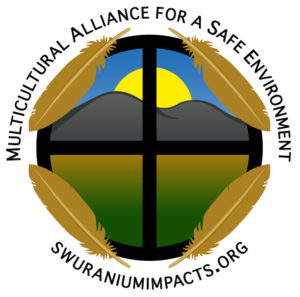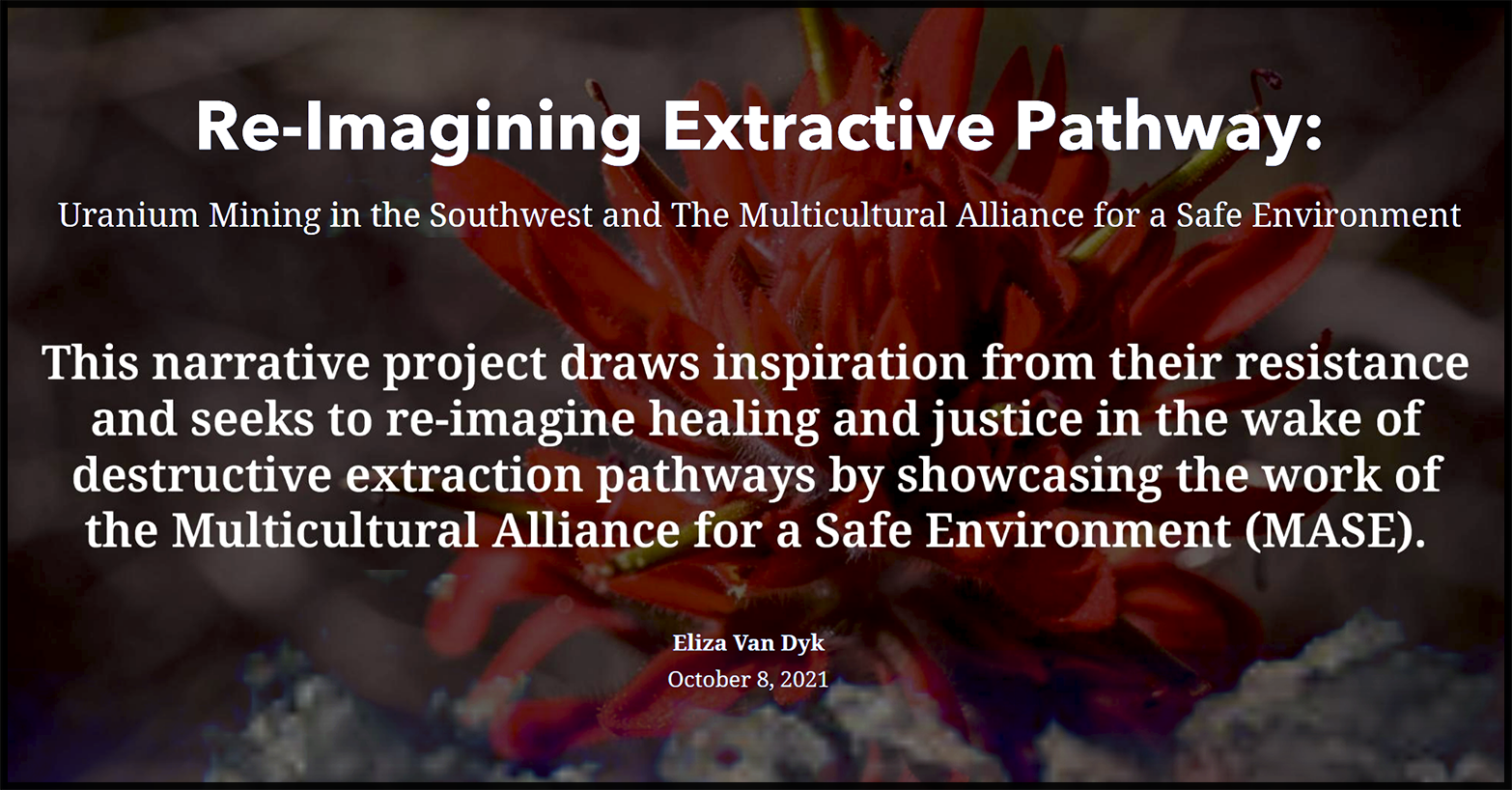International Human Rights Body to Hear Case Alleging U.S. Violated Human Rights of Navajo Communities When Licensing Uranium Mine in Church Rock & Crownpoint, New Mexico
For Immediate Release
July 19, 2021
Media Contacts:
- Larry J. King, Eastern Navajo Diné Against Uranium Mining (ENDAUM), (505) 979-1411,
l_king2013@yahoo.com - Jonathan J. Perry, ENDAUM Director, (505) 979-1027, jonjperry@yahoo.com
- Eric Jantz, Staff Attorney, New Mexico Environmental Law Center (NMELC), (505) 980-5239,
ejantz@nmelc.org
International Human Rights Body to Hear Case Alleging U.S. Violated Human Rights of Navajo Communities When Licensing Uranium Mine in Church Rock & Crownpoint, New Mexico
Crownpoint and Church Rock, NM (Navajo Nation)—Eastern Navajo Diné Against Uranium Mining (ENDAUM) announced today that their petition to the Inter-American Commision on Human Rights against the United States has been declared “admissible.” In admitting all ENDAUM’s allegations, the Commission stated that: “if proven, the facts of the petition could characterize violations of the right protected in Articles I (life and personal security) and XI (preservation of health and well-being, XIII (benefits of culture), XVIII (fair trial) and XXIII (property) of the American Declaration.” The IACHR Report on Admissibility can be found at this link: http://www.oas.org/en/iachr/decisions/2021/USAD654-11EN.pdf
The petition alleges that the United States, “by its acts and omissions that have contaminated and will continue to contaminate natural resources in the Diné communities of Crownpoint and Church Rock… has violated Petitioners’ human rights and breached its obligations under the American Declaration of the Rights and Duties of Man.” The petition can be accessed at this link https://nmelc.org/wp-content/uploads/2021/07/endaum_final_petition_with_figures-1.pdf.
The petition was filed by ENDAUM, a grassroots nonprofit organization formed in 1994 in response to concerns in the Crownpoint and Church Rock communities about the proposed in situ leach (ISL) uranium mines by Hydro Resources, Inc. (HRI), now owned by Canadian mining company Laramide Resources, Inc.. The NRC granted a source and byproduct materials license to HRI (now Laramide) to conduct uranium mining using ISL technology at four sites in the Navajo communities of Church Rock and Crownpoint in northwestern New Mexico.
The Commission’s decision to hear the case, ENDAUM et al. v. United States of America, is only the second time that the human rights body, the autonomous organ of the Organization of American States (OAS) based in Washington, D.C., has found admissible a case of environmental justice against the United States. The first case was Mossville Environmental
Action Now’s petition for failure to address continuing environmental racism in Louisiana’s “Cancer Alley.”
“The petition marks the first time the NRC has been forced to account for its decades of human rights violations,” said attorney Eric Jantz, of the New Mexico Environmental Law Center.
The proposed uranium mining project threatens life, health, water, cultural practices and property. Larry King, a resident of Church Rock, is a former uranium miner and ENDAUM member. Mr. King and his family live on one of the proposed mine sites; if the mining proceeds as the NRC has licensed it, Mr. King, his family and his livestock will be forcibly removed from his land for the duration of the mining operation.
The NRC’s decision to license HRI/Laramide’s project is particularly egregious because Church Rock has already suffered disproportionate damage from historic uranium development. Church Rock is a low-income community of color and also the site of the largest nuclear disaster in U.S. history. On July 16, 1979 the tailings dam at the United Nuclear Corporation uranium mill broke and released 93 million gallons of radioactive liquid into the Puerco River, a river which runs through Church Rock. The flood of radioactive and toxic liquid killed livestock and destroyed crops. It also left a wake of radioactive waste and heavy metals in the Puerco River’s bed and banks that has yet to be remediated.
The Navajo Nation hosts 520 abandoned uranium mine sites and three uranium mill sites that are Superfund sites. These sites are the source of contamination for tens of millions of gallons of groundwater and countless acres of land.
There are 13 sites within 6 miles of the proposed mine in Church Rock where uranium was mined and processed, all of which still have radiation levels much higher than undeveloped areas. The proposed site is above the Westwater Canyon Aquifer that is used by 15,000 people. Hundreds of people live within 5 miles of HRI’s Church Rock sites, and many are exposed to radon up to 42 times higher than background. The proposed sites in Crownpoint are located extremely close to schools, municipal drinking water supply wells, and homes.
According to recent research, residents living within half a mile of abandoned uranium mines experience a significantly increased risk for kidney disease, diabetes, hypertension, auto-immune disease.
The ISL mine also threatens the Diné’s distinct cultural and spiritual ties to the land and environment within their traditional homeland. Contamination from the HRI/Laramide mine would render the land unsuitable for plant gathering, food cultivation, and ceremonial purposes.
“This is a major step bringing forth accountability of the federal government in terms of their policies toward Indigenous People,” said Jonathan Perry, ENDAUM Director. “We, the Diné, will continue to stand our ground against any uranium mining activities on or near the Navajo Nation.”
“The priority of the U.S. government should always be adequately addressing the 523 clustered contaminated sites on the Navajo Nation, not licensing any new extraction projects,” said Perry.
“Especially any ISL mining proposals that threaten the well-being of our people, aquifers, and homelands,” Perry added.
The ISL industry has a poor track record of spills and leaks that even the NRC acknowledges. The industry also has a very poor record of remediating groundwater contaminated by the ISL process. In fact, the US Geological Survey said, after 30 years of ISL mining in Texas, that no ISL uranium mine restored groundwater to pre-mining conditions. NRC admits that “restoration to background water quality …has proven to be not practically achievable.”
Written arguments are due in August, with a possible 60-day extension, and then a hearing in Washington, D.C. will be scheduled likely in the Spring of 2022.
###






